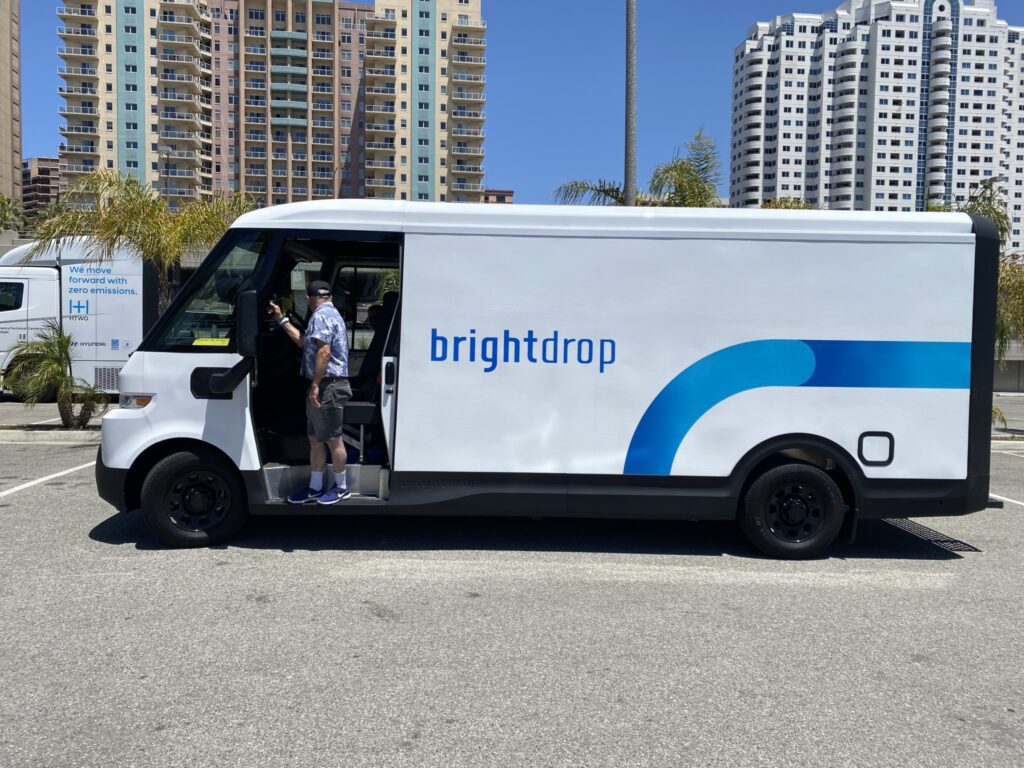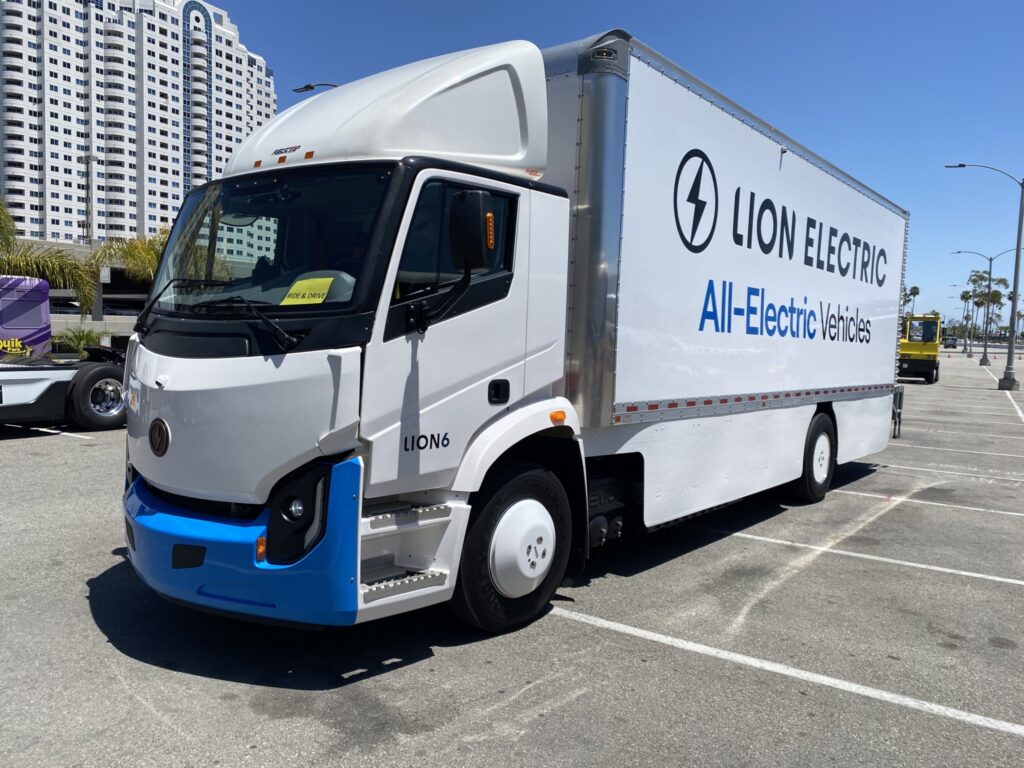Canadian-made tech plants flag at ACT Expo
California is clearly ground zero in the race to develop zero-emission vehicles, thanks to aggressive emissions rules and sales targets established by the California Air Resources Board (CARB). But several options showcased during the annual ACT Expo in Long Beach had a decidedly Canadian pedigree.
BrightDrop’s battery-electric Zevo 600 van will be manufactured at a repurposed CAMI assembly plant in Ingersoll, Ont. Lion Electric was highlighting the Lion6 battery-electric truck engineered in Quebec and soon to use battery packs manufactured in Saint-Jerome. Vancouver-based Westport Fuel Systems showcased its just-unveiled HPDI engine that can burn directly injected hydrogen.
And the underlying work continues to accelerate.

The CAMI plant, which just weeks ago produced its last Chevy Equinox, is currently retooling and will be back online by the fourth quarter of the year. General Motors is investing a collective $2 billion in its BrightDrop subsidiary and an expanding Oshawa plant, with the federal and provincial governments each investing $259 million.
Further east, the building to house Lion Electric’s battery plant is beginning to take shape and will open in a matter of months. It represents a $185-million investment by Lion, supported by a combined $100 million in funding through the federal and Quebec governments.
“Right now we’re testing our first battery pack,” said Marc Bedard, president and founder of Lion Electric. “Everything exactly the same as it will be commercialized in a few months from now.”
The final products will not be for U.S. markets alone, either.
“There was a lot of desire to start EV production up there.”
Steve Hornyak, BrightDrop chief revenue officer
Early Lion6 units are already being tested in Canada by fleets including Ikea and Day&Ross, the latter of which used the truck in a Run on Less – Electric demonstration organized through the North American Council for Freight Efficiency. BrightDrop plans to have vans rolling through major U.S. Canadian centers in 2023 – building on the initial FedEx units already on California roads.
“Where you see a lot of high-density e-commerce product delivery, that’s going to be the first places,” said BrightDrop chief revenue officer Steve Hornyak. “I call them the ‘football cities’, the ‘hockey cities’ if you’re in Canada.” If they’re big enough for a sports franchise, they have the critical mass to support early electric vehicles.
Ingersoll is an ideal place to produce the van because the plant has a heritage of being innovative and flexible, he added. “There was a lot of desire to start EV production up there.”
The Zevo 600 already betters the flexibility of some competing electric delivery vans, thanks to features including a typical 400-km range and four-wheel drive. It actually secured a Guinness World Record for the longest distance traveled by an electric van on a single charge, after driver Stephen Marlin took it 418 km from New York City to Washington, D.C.
“We wanted the initial product to be able to handle any environment without range anxiety or driveablity anxiety. And then we’ll come up with derivative versions of it over time,” Hornyak said.
But the longer range will also give users a chance to maximize available charging locations as infrastructure is developed. “You can deploy more EVs with less infrastructure with a higher-range vehicle,” he added.

Supply chain challenges
Bedard suggests that the pace of electric vehicle rollouts slowed over the last 18 months, in part because of pandemic-related economic challenges. But things are different now.
“All the meetings that we’re having right now, it seems that the truck market is coming back,” he said. “It’s exciting.” Governments have announced massive investments in related funding for everything from purchasing incentives to charging infrastructure. Canada’s latest federal budget is committing $780.9 million for medium- and heavy-duty zero-emission vehicles (ZEVs) over the next five years.
“The good news with the electric trucks is that the total cost of ownership right now works very well, even without the subsidies,” Bedard said. The business case looks even better against a backdrop of soaring diesel prices. But the subsidies help to offset the undeniably higher purchase prices for battery-electric offerings.
“It seems that the truck market is coming back.”
– Marc Bedard, Lion Electric president and founder
No matter what equipment is being produced, however, manufacturers continue to juggle an array of supply chain challenges.
“The harnesses, the connectors, the cells as well. Basically everything takes longer than usual,” Bedard said. “What took two months in the past is now taking four or five months.”
Planning is the key to addressing the issue. Lion already has what it needs for next December in the queue. But the new Quebec battery plant will also play a role in helping to shield the manufacturer from future supply chain disruptions.
“When you’re buying the modules from somebody else, or if you’re buying the battery packs – which is even worse – you’re totally captive,” he said. “We’re in better control of what we’re doing.”
Shortages are not limited to materials alone, but Bedard stressed that electric vehicle makers have an advantage as recruits look for employers who have an environmental focus. “They want to work for companies that are taking care of the children and the planet.”
“There is almost always some kind of war for talent. It’s super-challenging,” said David Johnson, CEO of Westport Fuel Systems. And that’s especially true at a time of the “great resignation”, and when looking for people who have specialized skills such as those needed to work on the future gaseous fuels.
“One of the advantages we do have is that we can source talent from around the world,” he said, referring to 1,800 employees, 350 of which are in Canada. The company has technical centers in Vancouver, Calgary, and Cambridge, Ont.
Beyond the batteries
Westport, however, wants the industry and governments alike to look beyond batteries in the bids to slash emissions.
“The investor community, the government and regulators have been almost singularly focused on battery-electric, and just in the last few years now fuel cells,” he said. “But the idea of using hydrogen in an internal combustion engine is pretty new.”
Unlike earlier hydrogen-fueled combustion systems that relied on spark plugs, Westport says its HPDI won’t sacrifice performance and efficiency. It promises 20% more power and torque than the base 13-liter diesel engine, and betters thermal efficiency by 5 to 10%.
The diesel-fueled pilot ignition means the engine falls just short of a fully zero-emission target, but Johnson doesn’t see that as a barrier.
“We think 98% reduction in carbon is really important and really valuable,” he said. “And the fact that it can go from fossil to renewable to hydrogen [fuel] is a great place to start. Frankly, I think the more important effect is the fact we can do it economically.”
Have your say
This is a moderated forum. Comments will no longer be published unless they are accompanied by a first and last name and a verifiable email address. (Today's Trucking will not publish or share the email address.) Profane language and content deemed to be libelous, racist, or threatening in nature will not be published under any circumstances.